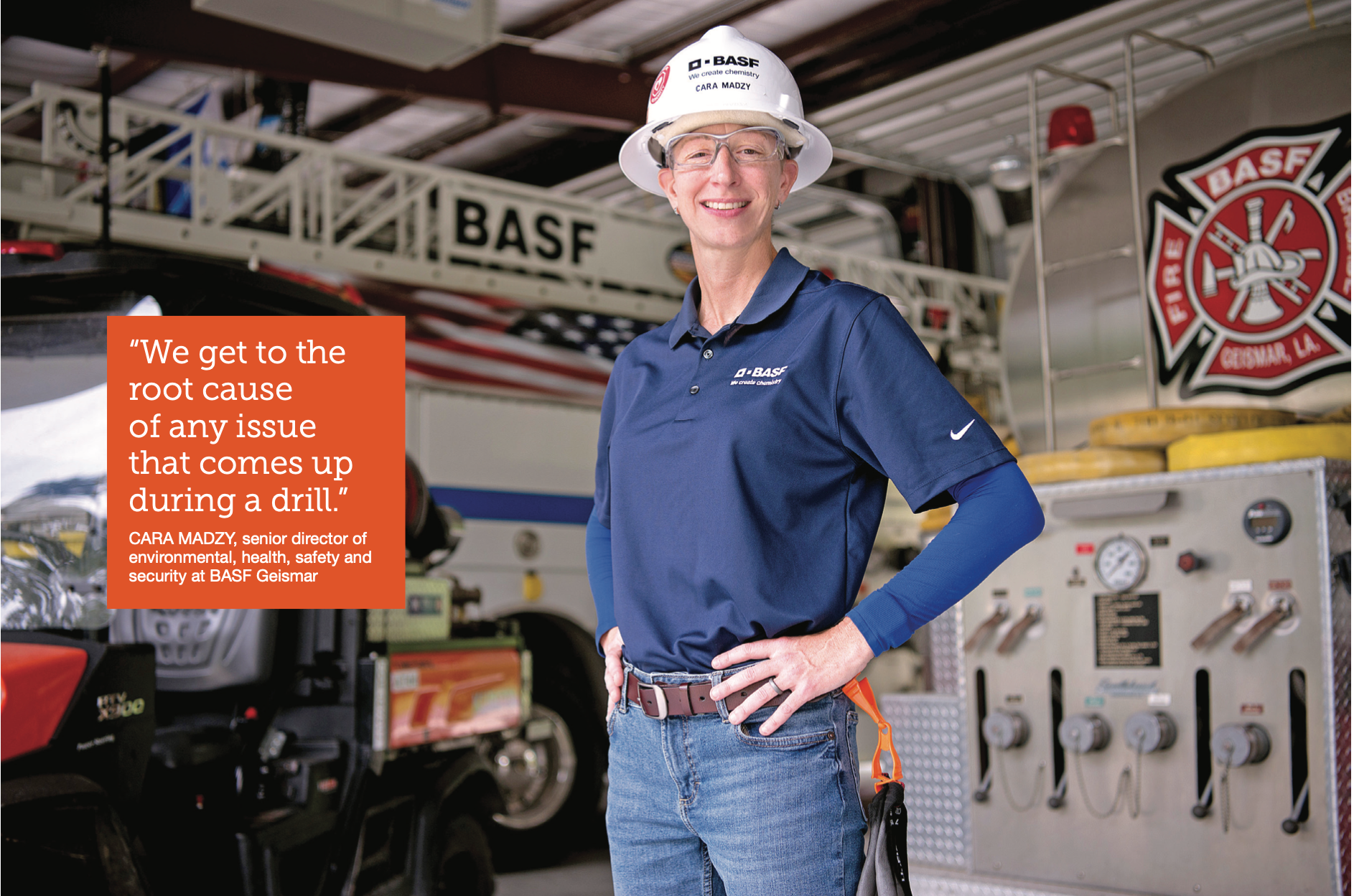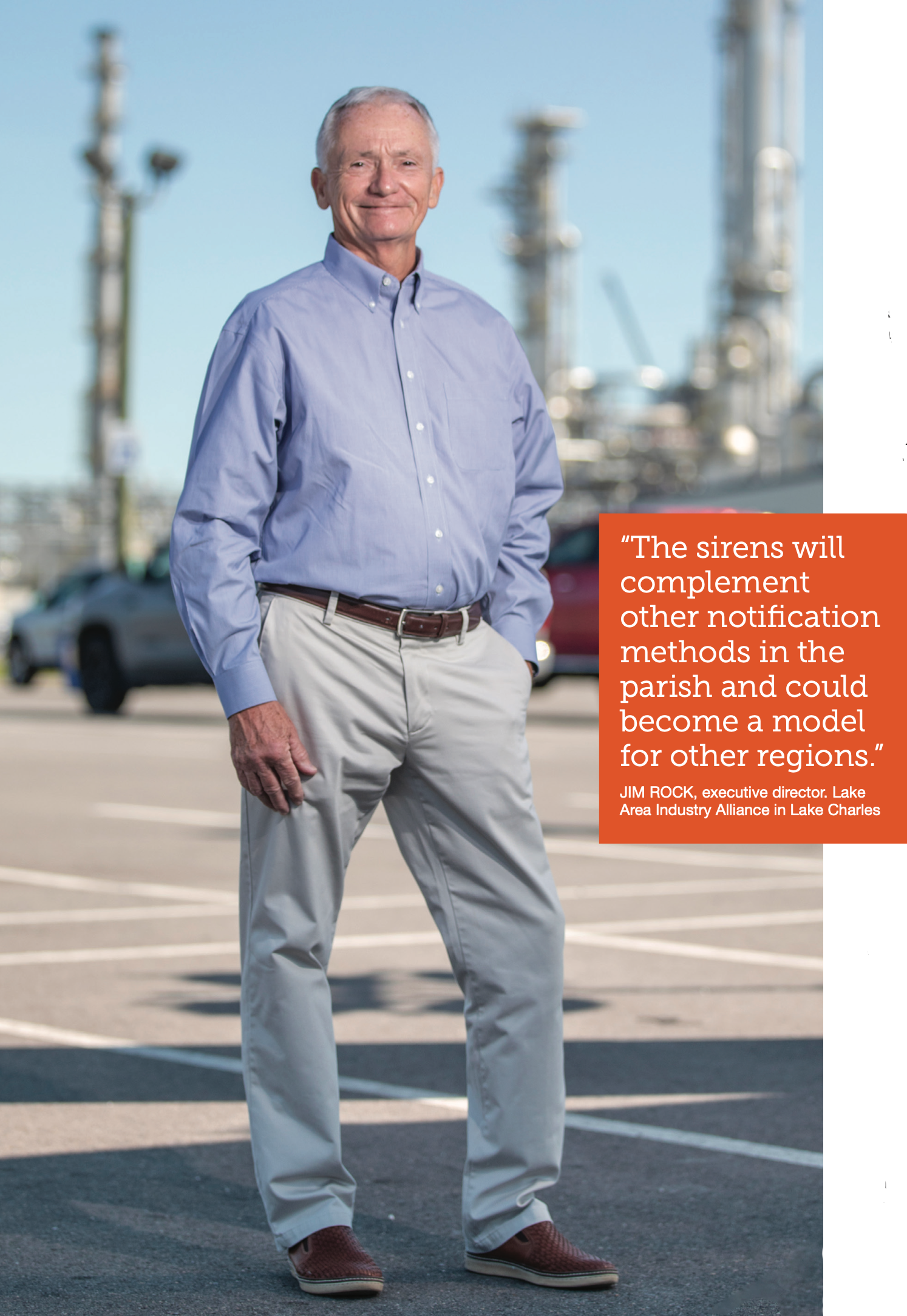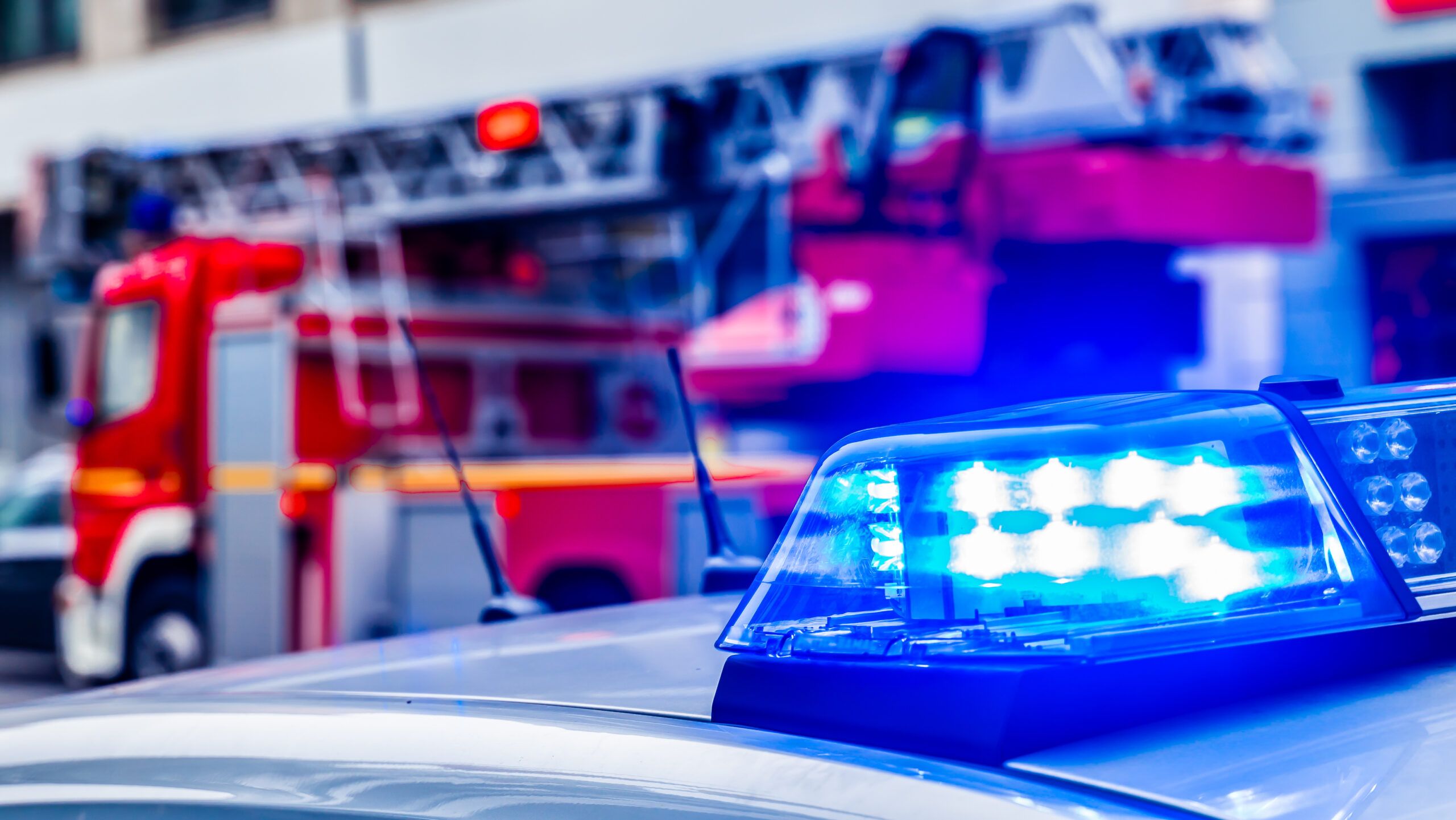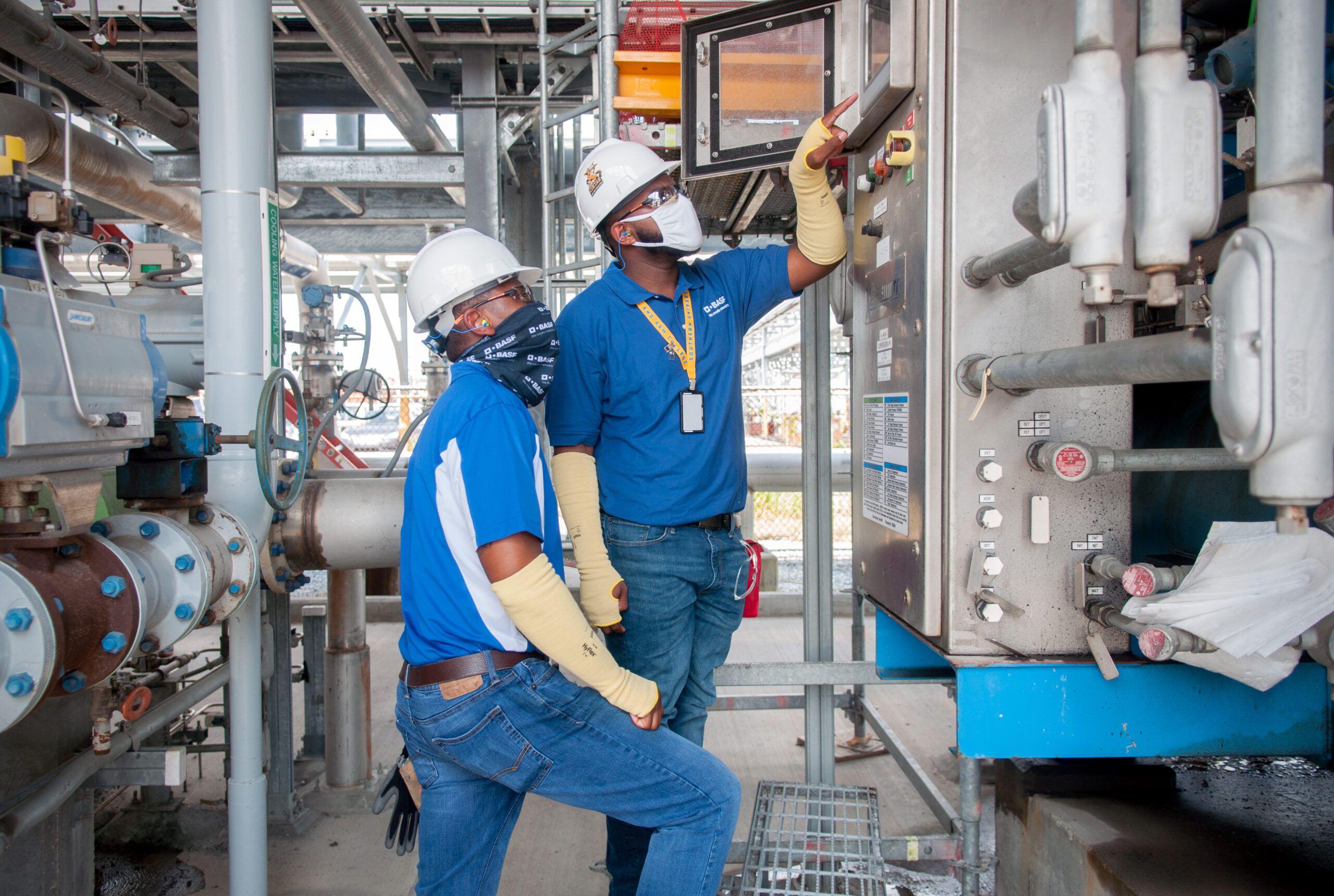When disaster strikes in the industrial space, it’s far too late to begin mapping out a game plan. Wasted time could potentially endanger the lives of employees, contractors or the public at large.
Most of Louisiana’s industrial facilities practice–somewhat relentlessly–for the unimaginable. In the process, they’re depending increasingly upon a blend of new technologies and old-school common sense, while collaboratively reaching across the aisle for assistance from other industrial plants and area emergency response teams.
Ryan Novak, senior manager of safety, health and emergency response at Sasol Lake Charles, says preparing for an emergency these days goes way beyond merely showing a PowerPoint presentation at a safety meeting.
Novak cut his teeth in the industrial hygiene world, but in the last couple of years has had his role expanded to include safety and emergency response.

“In years past, our facility’s emergency response program was led by a few members of the safety department, and supported mostly by volunteers,” he says.
“We now provide 24/7 coverage and have 16 full-time people working across four shifts,” he adds. “The team includes professional firemen and paramedics who are trained in rescue and HAZMAT response.”
Sasol also purchased a full complement of emergency response apparatus in 2016, including rapid response vehicles and a fire engine.
In similar fashion, BASF Geismar has ramped up its equipment and personnel over the years, and today supports a fully staffed emergency response team complemented by multiple response vehicles, equipment and an on-site medical facility.
Cara Madzy, the plant’s senior director of environmental, health and safety, or EHS, as well as security, conducts four site-wide drills per year, most of them focusing on hypothetical events that could impact the surrounding community.
“We get to the root cause of any issue that comes up during a drill,” Madzy says. “We determine what happened, why it happened and what the root causes were, as well as identify best practices.” An EHS leadership team then actively discusses the outcomes and cascades their findings to the remainder of the site.
Sasol’s drills are executed collaboratively with LyondellBasell, their joint venture partner, as well as with other plants in the area. Following each drill or incident, they perform an after-action review. “Our drills are preplanned with the management teams and are full-scale field exercises focusing on worst case scenarios identified by our risk management programs,” Novak says.
For additional training, their emergency response team participates in annual firefighting, rescue and hazmat training at Texas A&M’s Engineering Extension Service.
And for knowledge sharing, they attend monthly meetings sponsored by the Southwest Louisiana Mutual Aid Association, comprised of public safety representatives, first responders, private sector members, support organizations and vendors in the area.
Says Novak: “We’ve made an intentional effort in the last two years to increase our level of engagement.”
Response Times
To minimize obstacles that might impede emergency response times, Novak’s team regularly invites local response teams, fire departments and nearby plants for walk-throughs and practice drills. Phillips 66, located immediately across the highway, trains with them regularly.
“That way, should there be an event or a mutual aid call, we’re not meeting people for the first time,” Novak says. “We have some measure of trust and confidence in their ability to do their job–and during an emergency there’s nothing more important than that.”
To reinforce their local relationships, BASF’s Geismar plant invited about 40 representatives of the Ascension Parish Sheriff’s Office, Louisiana State Police, Louisiana Department of Environmental Quality and local emergency response teams to review their security plan and emergency response protocols.
More recently, they offered the use of their administration building to the local sheriff’s office for an active shooter drill.
“We want to maintain those relationships so we can communicate effectively during an emergency,” says Blythe Lamonica, external communications manager.
No matter a plant’s location, any emergency with the potential to impact the public is typically overseen by the parish Office of Homeland Security & Emergency Preparedness, or OHSEP, the Louisiana State Police, local law enforcement and fire department. If it’s a large-scale event, the Governor’s Office of Homeland Security & Emergency Preparedness, or GOHSEP, in Baton Rouge steps in to support the effort.
“When a parish has exceeded their capacity, we help with operations, logistics or administration … to plug gaps and holes,” says Mark Ward, assistant director of emergency management at GOHSEP in Baton Rouge.

“For example, if it’s some type of air monitoring that’s needed, those requests come from the parish level up to us, and then we ask DEQ if they can assist. If they say no, we go to the next person on the list or contract it out to a third party.
“We can help with messaging, getting equipment there, air monitoring etcetera, and we’re taking to the state partners to make sure they get what they need. We’re here to help coordinate whatever needs to be coordinated, as well as provide any type of operational or logistics support to that local area.”
Following an event, BASF’s initial point of contact is the Ascension Parish Community Awareness Emergency Response, or CAER, network.
“Each of the facilities is plugged into the network, so if there is an incident that we think may have significance off-site, we call into the system and it notifies the sheriff and state police,” says BASF’s Lamonica. “We’ll guide them, but they’ll make the decision about how to move forward. They’re all tied together–if there’s an incident in a chemical plant, state police is in charge and they make the decision.”
At Sasol, a dispatcher contacts the local CAER network, which in turn notifies the parish OHSEP.
“We communicate what is happening and what we’re doing about it,” Novak says. “And we will advise them on community shelter-in-place evacuation protocols based upon what we know. We don’t make the decision, but we certainly advise them.”
Technology is perhaps having the biggest impact on response times. In 2025, the Calcasieu Parish OSHEP plans to replace all 36 of the parish’s aging sirens with new technology featuring 360-degree sound projections, a longer sound projection of up to 1.2 miles and solar panels for an independent power supply.
The parish reached out to the Lake Area Industry Alliance for assistance.
“We used a map of the industrial locations in the parish and reviewed each facility’s worse case scenarios to determine areas that would need to be covered for potential shelter in place events due to industrial activity,” says Jim Rock, executive director of LAIA in Lake Charles.
“This showed that using the existing locations resulted in some areas being covered by multiple sirens while other areas were not.”
They subsequently determined the optimal locations for the sirens and, in the process, identified four additional locations in outlying areas. “The sirens will complement other notification methods in the parish and could become a model for other regions,” Rock says.

Drones have also become a vital response tool at most plants. Using their own drone pilots, BASF operates the devices both during and following an event. “They’re used for air monitoring, to photograph damage or other issues, or even to strategize how we need to address the situation,” Madzy says. “All those pictures are transported back to the Incident Command Security for better decision-making.”
Sasol uses a third-party drone operator, with similar results.
“They’ve been incredible,” Novak says. “We responded to some wildfires last summer and we were able to see what path the fire was taking and how far ahead we needed to get a bulldozer and make that fire line … they were undeniably instrumental to the success of our response.”









